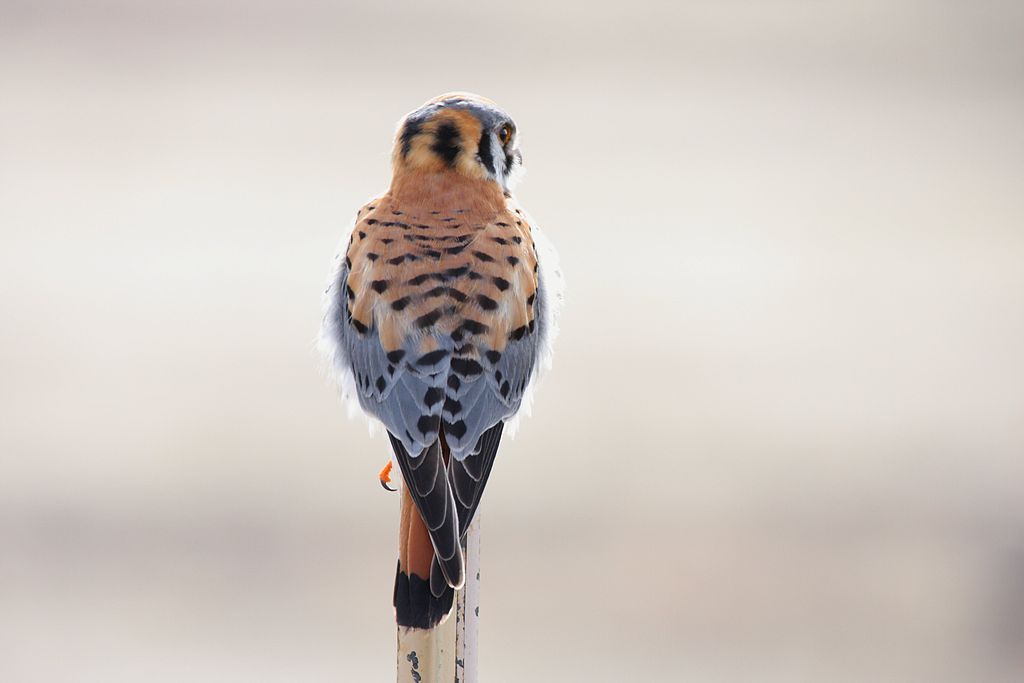
18 June 2023
When I began watching peregrine falcons 22 years ago, peregrines were endangered and our smallest falcon, the American kestrel, was doing just fine, but the tables have turned. Peregrines have fully recovered from extinction in eastern North America while kestrels have lost half their population and face an uncertain future. The New York Times described their plight this week in The Mystery of the Vanishing Kestrels: What’s Happening to This Flashy Falcon? Can we save this beautiful bird before it’s gone?
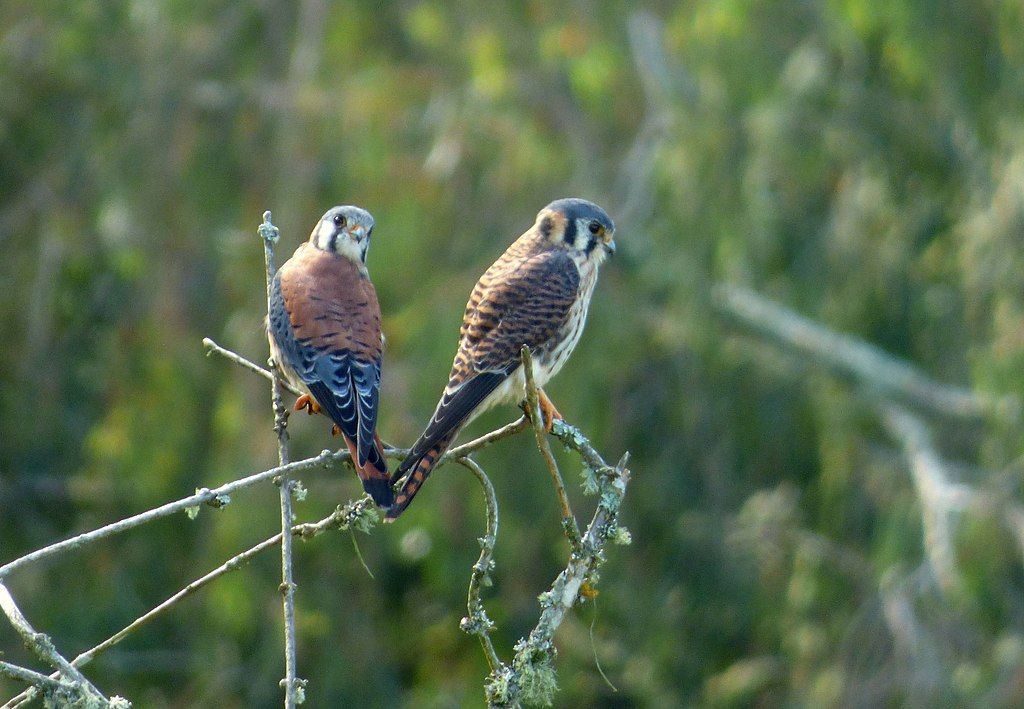
American kestrels (Falco sparverius) range from Alaska to Tierra del Fuego and are the only “kestrel” in the Americas, but they aren’t true kestrels like those found in Europe and Africa. Instead, DNA tests have shown that our kestrel is closely related to the larger falcons of the Americas, including peregrines. Falco sparverius evolved to fill the kestrel niche.
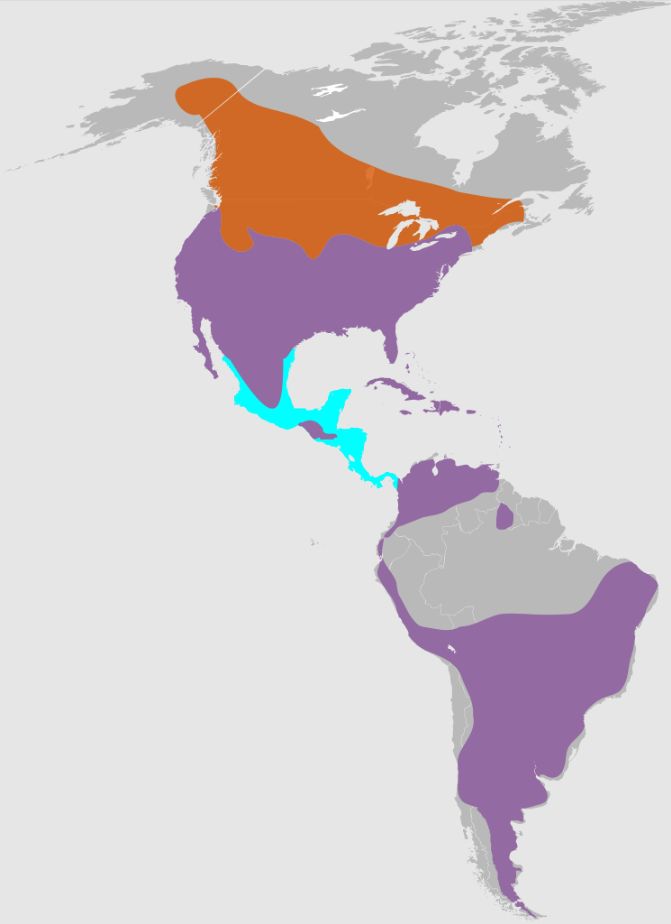
American kestrels are versatile birds. At home in grasslands, meadows, deserts, cities and suburbs, they eat grasshoppers, crickets, large flying insects, beetles, lizards, small rodents and small birds.
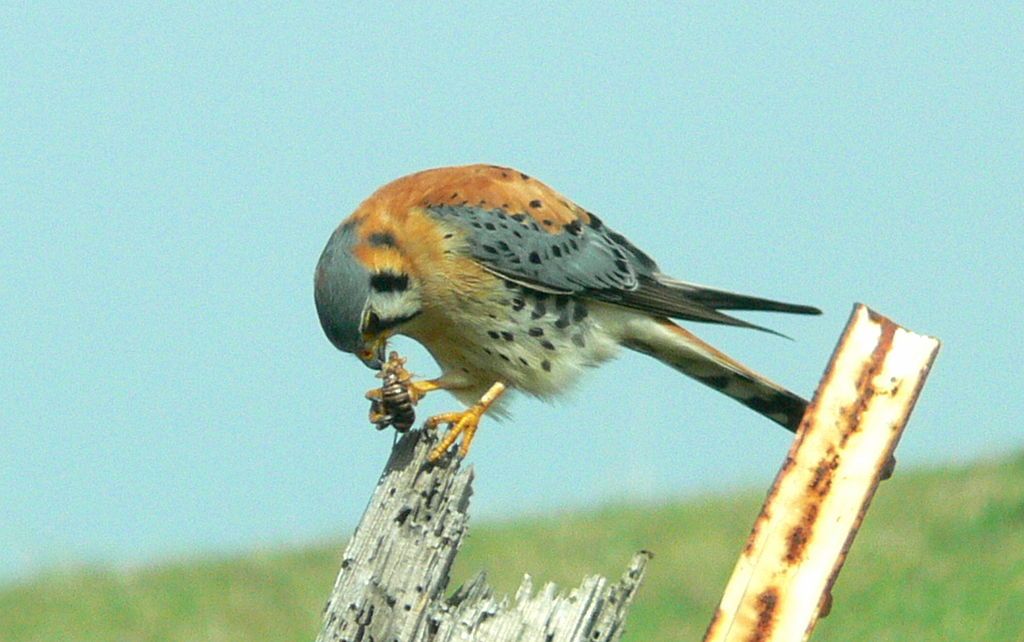
Kestrels nest in cavities in buildings, trees, cliffs and nestboxes but more than half of their sites are unoccupied now in eastern North America. I’ve seen the decline first hand in Pittsburgh. A decade ago there were two kestrel nests within a few blocks of Downtown’s Third Avenue peregrines. Now there are none.
Dr. John Smallwood, a professor of biology at Montclair State University interviewed in the New York Times article, has monitored 100 kestrel nestboxes in New Jersey for nearly 30 years. The number of occupied nests at his sites peaked at 61 in 2002 and has dropped ever since.
What’s going wrong for kestrels? Are they out-competed for prey? Are they ingesting poison? What’s happening on their wintering grounds? Are insect declines affecting kestrels? Are neonicotinoid pesticides a factor? And what about the bigger questions of habitat and climate change?
Many kestrel experts think it’s a combination of causes. Dr. Smallwood agrees, but he still has a top suspect. “If I’m only allowed one word: grasshoppers.”
The one parameter that seems to be declining over time, researchers say, is survival of young birds in the summer.
… the thinking is that those juveniles may be more dependent on insect prey because it’s easier to catch.
— New York Times: The Mystery of the Vanishing Kestrels: What’s Happening to This Flashy Falcon?
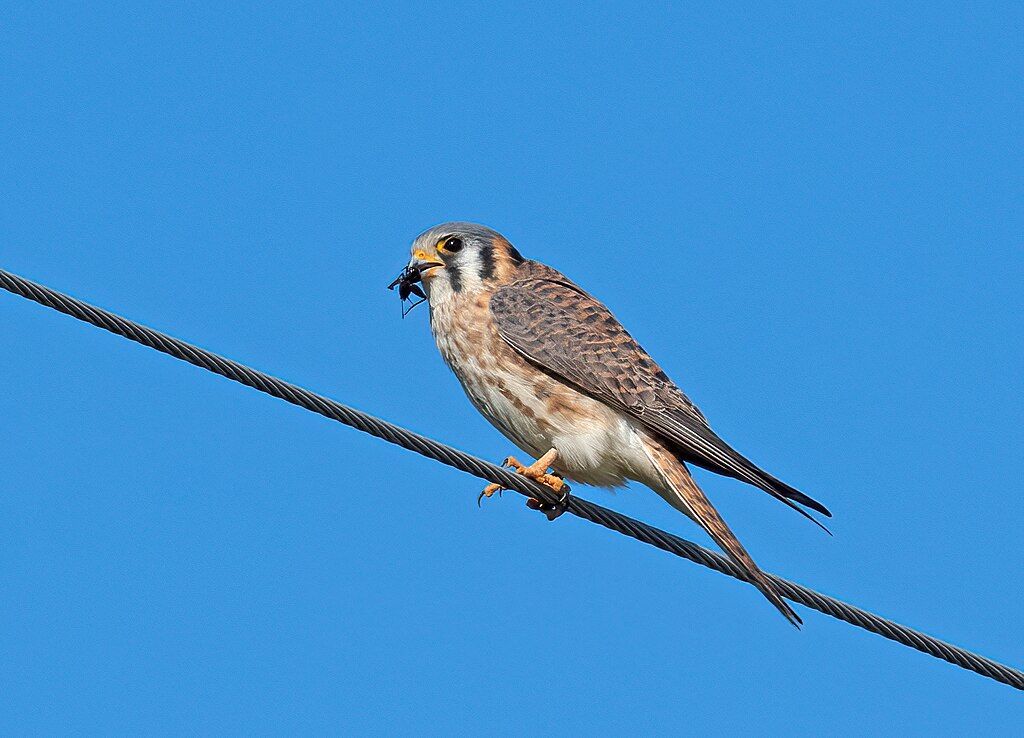
I would not be surprised to learn that the kestrels’ decline is linked to the rapid insect decline in this century which was probably prompted by neonics. Neonicotinoids were first introduced in the 1990s but didn’t take off as a pesticide until the early 2000s.
Meanwhile a nationwide study funded by the USGS and the U.S. Fish and Wildlife Service is looking into the American kestrel’s mysterious decline. I hope they find the answer soon.
Read more at The Mystery of the Vanishing Kestrels: What’s Happening to This Flashy Falcon?
(photos and map from Wikimedia Commons, click on the captions to see the originals)
I saw a kestrel with rodent prey in Allegheny Cemetery during my lunch time walk. What a beautiful bird.